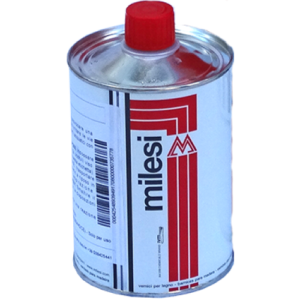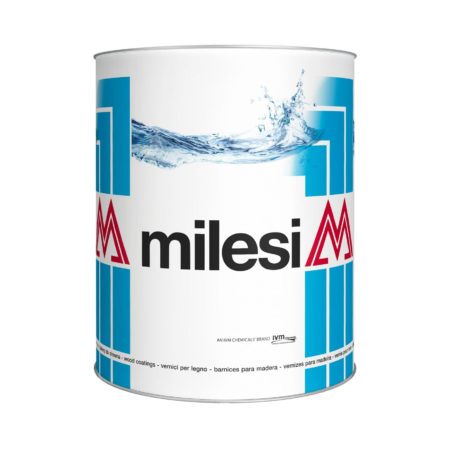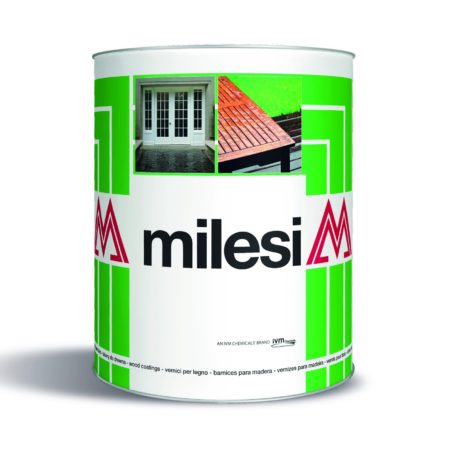In this post we will provide an overview of the various types of professional spray finishes used by most cabinet shops and/or cabinet refinishers.
There are a lot of choices out there when it comes to cabinet finishes. Water-based, solvent-based. Pre-catalyzed, post-catalyzed, 2K, 1K, urethane, acrylic, urethane-acrylic blends. The list seems endless.
So what sets them apart? Before we answer that question, I want to point out that if there are any chemists or formulators reading this, they would likely take issue with some of the definitions and terminology. But like the terms “varnish” and “enamel”, these terms and definitions have taken on a life of their own such that folks within the industry will easily understand each another. I also simplify some of the chemistry, but the general explanations still holds true. So, let’s get started.
Professional wood finishes can be broken into 3 main solvent types:
- Solvent-based
- Water-based (also referred to was waterborne – more on this below)
- Oil-based
Within these solvent types, there are a handful of resin types/coating technologies.
Note: I will use the term catalyst, crosslinker and hardener interchangeably in this article.
Solvent Based
Technically all finishes we will discuss are solvent-based (water itself is a solvent) , but for the ease of discussion we refer solvent based as those coatings that thin and/or clean up with something other than water or mineral spirits.
In the professional wood finishing world, there are two main classes of solvent-based coatings: Lacquers and Urethanes
Lacquers
Lacquers themselves are broken into four main categories: nitrocellulose, CAB Acrylics, pre-catalyzed and post-catalyzed.
Nitrocellulose
Often referred to as “nitrocell”, this is the granddaddy of lacquers and was first introduced decades ago. Very few cabinet finishers use this product anymore due mainly to its lack of durability and moisture/chemical resistance. On the other hand, those who finish and repair furniture love it because it will actually re-open an existing coating, thus making it very easy to blend and repair.
- Relatively inexpensive
- Very easy to repair
- Most are amber out-of-the-can
- Finish ambers significantly
- Very low water and chemical resistance
CAB Acrylic
CAB acrylics (or simply “CAB”) are also old-school technology that is rarely used on cabinets anymore. CABs are basically a nitrocellulose with an acrylic resin added. The main reason it continues to hang around is that it offers the combination of: water-white, non-yellowing & non-catalyzed in a solvent-based package.
- Water-clear (not amber in the can)
- Non-Yellowing (will not amber)
- Good adhesion
- Some manufacturers approve using over metals such as brass and bronze
- Mediocre durability
- Can be a little pricey for the level of performance offered
Pre-Catalyzed
Pre-catalyzed (or simply “Pre-Cat”) first started coming on the scene around the early 1980s. These are basically a nitro-cell with an acid-based catalyst added for improved overall durability. These are very popular in the solvent-based finish category.
Over the years, several variations have come on the scene. Some have UV inhibitors added to slow down ambering. Some have “hotter” (i.e. stronger) catalysts to further improve durability [some of which are misleadingly sold as conversion varnishes with “x” days (versus hours) of pot-life].
- Water-clear (many, but not all)
- Decent to solid durability
- Been around forever and are still popular
- Most will amber (some manufacturers try to slow with UV additives)
- Many are not water-white
- Older technology
- There are more durable options available
- Can be sensitive to cracking around stiles and rails and/or when over-built (though not as sensitive as post-cats)
Post-Catalyzed
Post-catalyzed (or simply “post-cat“) finishes are considered to be the most durable option in the solvent-based lacquer category. The chemistry can vary fairly widely, but think of post-cat as a nitrocell where you add the catalyst at the time you are ready to spray.
Like pre-cats, these catalysts are also acid-based but are much stronger. As mentioned, you add the catalyst yourself and most have an 8-12 hour pot-life (the amount of time you have to spray them after catalyzing before the material goes bad).
Within the post-cat family are what’s referred to as conversion varnishes (or “CVs”). All CVs are post-cat, but not all post-cats are CVs. Without getting into the details, CVs are always water-clear and non-yellowing. Typical post-cats may be water-clear, but they are not non-yellowing. (you may need to read that paragraph a few times ;-).
Shops have been using post-cats for 20+ years and they have a very devoted following. And though it is true that post-cats are the most durable in their category, they are also the most finicky. It is true that they dry very hard and exhibit superior chemical resistance versus all other options in this category. But that hardness comes at a price. They are sensitive to overbuild (virtually all are not to be built over 5 total dry mils) and they don’t like to move around. At all. You are almost guaranteed to get cracking between the stile and rail within 6-12 months of finishing with a post-cat.
- Best chemical resistance in the category
- Proven technology
- Dries to a very hard finish
- Water-clear (some)
- Non-yellowing (some)
- Least forgiving technology in this category
- Brittle
- Sensitive to proper Catalyzation
- Sensitive to being overbuilt
- Have a pot-life
- Can amber (true CVs will not though)
- Typically the most expensive in option this category
Urethanes
Because the types, features and benefits of urethanes are very similar when comparing solvent- and water-based technologies, I will expand on them in the “Water-Based” section below.
I will say generally speaking, solvent-based urethanes would edge out water-based when it comes to all-out performance. BUT that is not always the case. Other benefits of water- over solvent-based are:
- Thin and clean up with water
- Low/no flammability issues
- Much lower odor
- More forgiving (easier to blend, etc.)
- Many respond quite well to brushing (great for on-site repairs, etc.)
Water-Based
Our next solvent-type is water-based. We happen to be a big fans of this technology and it is what we feature on WoodFinishesPlus.com.
The summary below will give you many of the reasons we are such fans, but once you have an opportunity to try a true quality product, you will see for yourself. That said, there are still a lot of water-based options out there that give this category a bad name, so do your homework!
A couple of things to note. We often refer to water-based products as “water-based lacquers“. Technically there is no such thing, but it helps more easily convey that we are talking about a water-based coating that is meant specifically for professional, production-oriented (formulated to be sprayed, fast dry/cure times, sands very well, is very durable, etc.) applications. Also, the true accurate term is “waterborne“. Like most, we use the terms interchangeably and we will avoid getting into the technical differences here as these terms have become standard and others will know what you are talking about.
Within the water-based category, you have three key resin types (acrylic, urethane and urethane acrylic blends) and two key technologies (1K and 2K). It is VERY important to keep in mind that not all resins are the same. There are literally tens of thousands of options of each resin type and they are definitely not all created equal. Here we will be speaking in generalities when comparing these two resin types.
Resin Types
Acrylic Resin
Acrylics offer very good durability while keeping cost below urethanes or urethane blends. They tend to exhibit above average adhesion, good flexibility and virtually all are water clear and non-yellowing.
- Least expensive resin
- Many offer very solid durability
- Water clear and non-yellowing
- Good to very good adhesion
- Least durable of the three resin types discussed here
- Not available in a 2K option
Urethane Resin
Urethanes have been used in the coatings world for decades (both water-based and solvent-based) and urethane is by far the most common resin used in the world (it is used in adhesives, insulation, coatings, etc.).
Urethanes are considered the gold-standard when it comes to finishes and is why they have been the go-to choice for high-performance applications in the industrial, automotive and flooring industries for decades (in solvent-based form). In fact, high-end automotive and production flooring companies have transitioned from solvent- to water-based urethanes as their go to finish for 10+ years. In Europe, urethane water-based finishes have been in widespread use in the cabinet coatings sector for many years.
Professional cabinet finishers in the U.S. are just beginning to realize the performance benefits of this technology. Why the delay? I personally believe the key reason has been the widespread use of inferior water-based technology coupled with the retailer/distributor’s inability to help explain the key benefits to the end user. That is certainly starting to change.
- Superior durability
- Available in 1K and 2K options
- The gold standard of resins
- Most established resin technology
- Great-to-superior adhesion
- Typically the most expensive resin option
- Not all are water-clear and/or non-yellowing (though most are)
Urethane/Acrylic Blends
Also often referred to as “hybrids” or “hybrid blends”. As the name implies, these are coatings that combine urethane and acrylic resins to create a blended formulation. The primary reason for creating these types of coatings is to reduce the cost of a straight urethane product where that level of performance and durability are not necessarily required.
A blend that has more urethane than acrylic would technically be called a “Urethane/Acrylic” and one that has more acrylic than urethane resin would be an “Acrylic/Urethane”. It is likely that some manufacturers do not strictly adhere to this proper terminology.
Pros and Cons of a given blend vary widely depending on the quality of resins used and the ratio of urethane vs acrylic resin in the formulation. There are also some blends that are 1K and some that are 2K. Refer to the Pros/Cons lists of the “Acrylic” and “Urethane” sections above and the “1K” and “2K” sections below to get an idea of what you are getting in a given blend.
Technologies
The two types of water-based coatings technologies are commonly referred to as “1K” and “2K”. 1Ks are often also rereferred to as “uncatalyzed”, “single-component” or “single-pack”, whereas 2Ks are often also referred to as “catalyzed”, “two-component”, “dual component” or “two-pack”.
1K (Single Component)
1K simply means the coating is not catalyzed. Virtually all acrylic resin wood finishes are 1K (if a true straight 2K acrylic resin exists, I am unware of it). Many urethanes and urethane/acrylic blends are also 1K. There are 1Ks on the market that offer exceptional durability – particularly the urethane/acrylic blends
1Ks tend to be less expensive since you do not have the cost of a crosslinker coupled with the fact that many are acrylic or acrylic blends, which also tend to be less expensive. They are also easier to use in that: a) you do not have to catalyze (“did I already add it?”, “did I add the right amount?”, etc.; b) there is not pot-life associated with a 1K.
- Less expensive
- Easier to use
- More durable options are availble
2K (Two Component)
2K indicates a coating that must be catalyzed prior to use. As mentioned above, 2Ks are almost always urethane based. As far a s overall performance and durablity is concerned, 2Ks are considered the gold standard. Again, it is why 2K has been used in the most demanding applications for decades.
The main strikes against 2K coatings is their relative cost (urethane resins and the addition of a catalyst) and the added complexity of dealing with catalyzation (proper mixing and associated pot life).
- Superior performance
- Higher cost
- There is an associated pot-life
- Ensuring proper catalyzation ratio is important
1K / 2K Options
There are coatings on the market that are intended to be used as a 1K but can be catalyzed and 2K coatings that can be used as a 1K. The Milesi HKA/HKR and HGA products fall into the latter category.
In general, optional crosslinkers added to 1K coatings will offer incremental performance improvement, but will not offer near the durability a true 2K coating would. Also, the crosslinker is typically not as “hot” as a true 2K crosslinker and often works such that when you reach the potlife you can crosslink a new batch and mix 50/50 with the expired product and keep spraying.
On the other hand, when a 2K is used as a 1K the resulting performance is often not quite as good as when a true 1K is used. Of course, this is not always the case.
In the end, your best bet is to find the product that works best overall for you and test catalyzed and non-catlayzed to determine if/when you would want to use a given mix. Either way, it is always nice to have a coating that offers both options in one package.
Oil Based
I want to quickly touch on oil-based simply to close the loop on wood finish coatings technologies. We appreciate there still ardent oil fans out there, but keep in mind we are speaking strictly from a professional cabinet spray finish perspective.
That said, oil-based coatings are/were typically used by house painters that occasionally refinish cabinets by brushing the finish. In recent years there has been a dramatic move from traditional oil-based to oil/water hybrids such as Benjamin Moore’s Advance.
The key reason spray finishers do not use oil-based is that they dry (and cure) very slowly and though they can be sprayed if necessary, they are designed to be brushed.
In summary, oil-based (or oil hybrids) have their place in the world, but we do not recommend them for those looking for the types of coatings we are addressing in this post.
****************************

As always, thanks for reading and please share any tips, tricks, questions or comments.
Disclaimer: Manufacturer documentation always takes precedent over any and all information provided by WoodFinshesPlus.com and WoodFinishesPlus.com accepts no responsibility for any discrepancies


